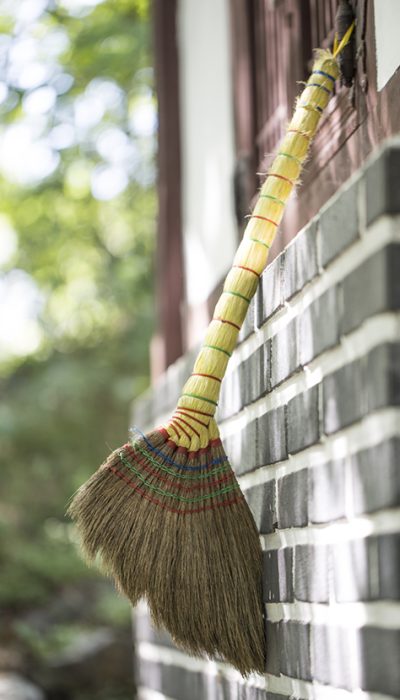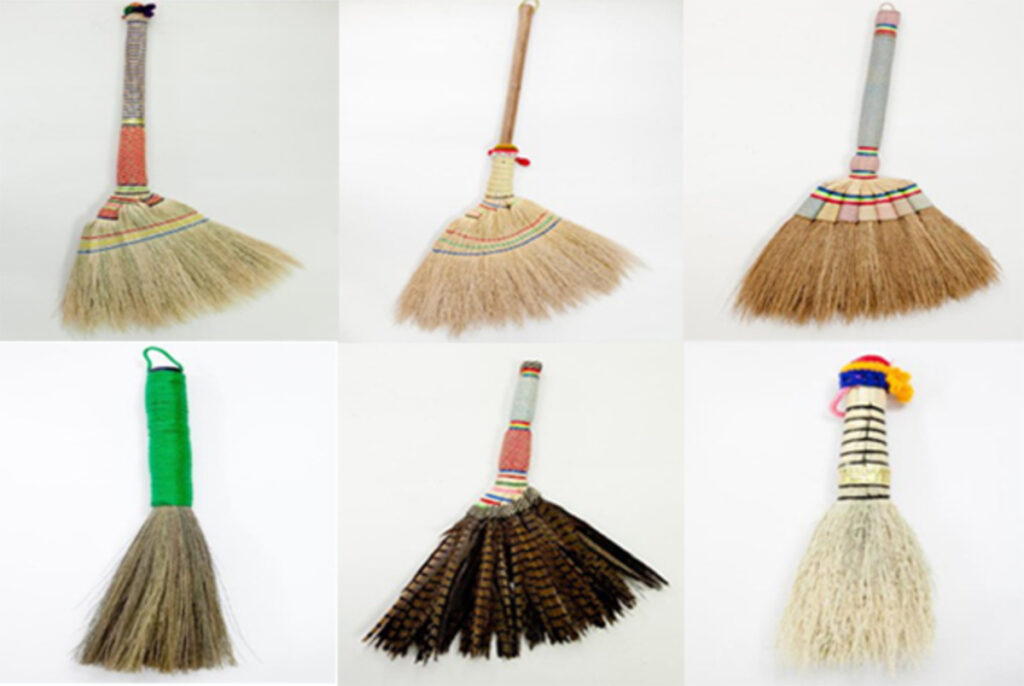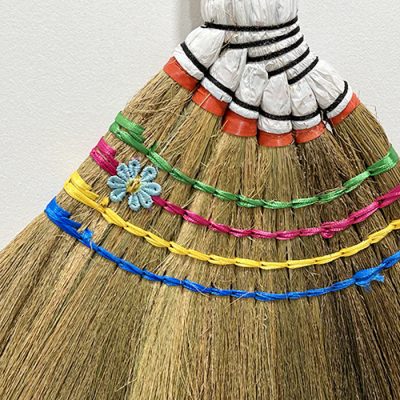Traditional Korean Reed Broom:
A Detailed Overview
The traditional Korean reed broom has been a staple cleaning tool in Korean households for centuries. Made from natural materials and handcrafted by artisans, this broom is more than just a cleaning device—it embodies a significant part of Korean culture and reflects a lifestyle harmonized with nature.
- Materials
The traditional reed broom is primarily made from reed grass or bamboo grass. These materials are typically harvested from wetlands or riverbanks in Korea. Reed is lightweight yet durable, making it ideal for use in cleaning tools. Once harvested, the reed is dried and prepared, maintaining its firmness and long-lasting quality.
- Manufacturing Process
The traditional reed broom is handcrafted using a meticulous process:
Harvesting: Reeds are gathered at the right time and dried thoroughly. This drying process ensures the reed becomes firm and durable, suitable for broom-making.
Hand Weaving: The dried reeds are cut to uniform lengths and carefully bound together by skilled artisans. This weaving process ensures the broom is sturdy and effective for cleaning.
Finishing Touches: The top of the broom is bound tightly, and a handle is attached. Multiple layers of reeds are woven together to ensure strength and functionality.
- History and Tradition
The Korean reed broom has a long history and was commonly used in rural and village settings. It is made from readily available materials, making it accessible to people from all social classes. Beyond its practical use, the broom reflects the traditional Korean philosophy of living in harmony with nature.
The broom is also a symbol of eco-friendly practices. Unlike plastic brooms, the reed broom is biodegradable and does not harm the environment, reflecting the wisdom of traditional Korean life which emphasized sustainability.
- Usage
Traditionally, the reed broom was used to clean wooden floors, yards, and stone pavements. Its soft fibers effectively gather dust and small debris without scratching surfaces. The broom’s lightweight and durable nature make it particularly suitable for use in windy rural areas, and it can be used for extended periods without losing effectiveness.
- Modern Reinterpretation
In modern times, traditional Korean reed brooms have seen a resurgence in popularity. With increasing emphasis on environmental protection and sustainable consumption, natural products like the reed broom are gaining attention. The broom is also valued for its aesthetic appeal and is used as a decorative item in interior design.
Some companies have reinterpreted the traditional reed broom with modern designs and are exporting it to international markets, such as the U.S. This effort helps introduce the cultural value of the broom while catering to contemporary needs. Brands like BlessingBroom are helping to maintain the broom’s traditional value while adapting it for modern living.
- Cultural Significance
The traditional Korean reed broom symbolizes Korea’s respect for nature and traditional craftsmanship. Like other cultural icons such as kimchi, Taekwondo, and hanbok, the reed broom represents Korea’s dedication to preserving and sharing its heritage.


The broom is not only a functional tool but also a cultural artifact that conveys the values of sustainability and artistry from Korean history. It continues to be cherished by those who appreciate the blend of tradition and environmental consciousness.
In summary, the traditional Korean reed broom is a practical and culturally rich tool that remains relevant today. It represents a harmonious blend of historical craftsmanship and modern eco-friendly values, making it a valued part of Korean heritage and contemporary sustainable practices.

